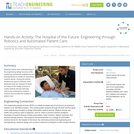
This resource is a video abstract of a research paper created by Research Square on behalf of its authors. It provides a synopsis that's easy to understand, and can be used to introduce the topics it covers to students, researchers, and the general public. The video's transcript is also provided in full, with a portion provided below for preview:
"Microbiomes are more than just prokaryotes and viruses; they also contain important eukaryotes, including fungi and protists. However, eukaryotes are difficult to study using ‘shotgun’ metagenomics, as their signal is often overwhelmed by the prokaryotes. Some methods use eukaryote-specific marker genes, but they can’t detect eukaryotes that aren’t in the reference marker gene set, and such methods are not compatible with web-based tools for downstream analysis. But CORRAL (Clustering Of Related Reference ALignments) is designed to close those gaps. CORRAL identifies eukaryotes in metagenomic data based on alignments to eukaryote-specific marker genes and Markov clustering. It can detect microbial eukaryotes that are not included in the marker gene reference set. The process is even automated and can be carried out at scale. A recent paper demonstrates CORRAL’s sensitivity and accuracy with simulated datasets, mock community standards, and human microbiome datasets..."
The rest of the transcript, along with a link to the research itself, is available on the resource itself.
- Subject:
- Biology
- Life Science
- Material Type:
- Diagram/Illustration
- Reading
- Provider:
- Research Square
- Provider Set:
- Video Bytes
- Date Added:
- 04/17/2023
